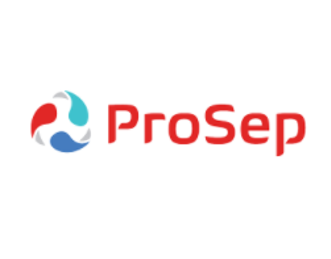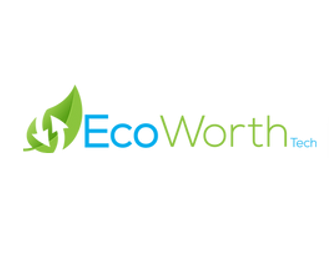123Fab #33
1 topic, 2 key figures, 3 startups to draw inspiration from

In January 2021, a research team from the Institut National de la Recherche Scientifique (INRS) developed an electrolytic wastewater process that degrades microplastics at the source, instead of a filtration process. Indeed, microplastics can be very present in wastewater, particularly in industrial waster. Industrial wastewater treatment describes the processes for treating wastewater produced by industries as an undesirable by-product.
Given the current pressure on water resources, water contamination issues and the water needs of industries (22% of global use, and 40% in Europe), industrial wastewater treatment is becoming imperative. All the more so as many industries are concerned by contaminated wastewater, be it agriculture (fertilizers), the construction industry (solvents, paints, grease), the food processing industry (organic particulates, animal waste) or oil & gas sectors (grease, oil waste). Treating industrial wastewater has two main benefits, which are reducing industries’ environmental footprint (by reducing waste and harmful contaminants released into the environment) and contributing to the circular economy (by reusing the wastewater to produce energy or fertilizer), thus turning waste into an additional source of revenue. Thereby the market is becoming more competitive and fragmented. However, the industry remains dominated by large companies, relying on their brand and patented product technology. Among the main players are the French companies Suez – which invests €74 million each year in more R&D programs for wastewater treatment solutions — and Veolia, but also international corporations like Ecolab (US) or Thermax Group (India).
The treatment of industrial wastewater requires special methods and technologies that can be divided into three categories:
- Physical treatment methods used to remove solid waste. The main techniques are sedimentation (suspending the insoluble particles from the water and separating them once they have settled to the bottom), aeration, and filtration.
- Chemical treatment methods involve the use of chemicals in the water. Chlorine and ozone are oxidizing chemicals commonly used to kill bacteria and prevent them from reproducing in the water.
- Biological treatment methods use a variety of processes to break down the organic matter present in wastewater. They include aerobic processes (a bacteria decomposes the organic matter and converts it into CO2 that can be used by plants), anaerobic processes (fermentation of the waste at a specific temperature), and composting (wastewater is treated by mixing it with sawdust or other carbon sources).
These three techniques to treat industrial wastewater are used at different stages of the purification process. During the screening phase, physical processes like sedimentation and filtration are used to remove solid waste from the wastewater. For instance, biofiltration is used to ensure that any additional sediment is removed from the wastewater. This is the core of Veolia’s patented technology, Biostyr. The wastewater is then clarified, using physical or biological methods, to remove suspended and floating matters. The refinery industry, for instance, uses a clarifier with a surface skimmer for oil and a bottom rake for solid – also called API separator. When the difference in density is not sufficient to separate oil-wetted solids, air floatation can be used. The company Akvola sells a solution based on a bubble generator and a flotation-filtration process for cleaning hard-to-treat industrial wastewater. The air bubbles attach to contaminants in the waste, decrease their density, and facilitate their separation. Afterward, wastewater is aerated (introduction of air into the water) to allow aerobic biodegradation of the polluting components. Finally, industrial wastewater is disinfected by chemical or biological processes. When it comes to final sewage sludge, it is treated before being sent back to the environment or reused. Sewage sludge is first thickened, then digested and dewatered. During digestion, the sludge produces CO2 and methane, often collected and used to generate power, as is done by AquaGreen. They provide products that focus on converting wastewater sludge into thermal energy, capable of supporting sludge facilities and district heating.
To conclude, innovation and technologies are being developed to treat increasing amounts of industrial wastewater. The environmental footprint (sewage sludge) and energy consumption (2-3% of global energy for water purification) are challenges that need to be addressed in order to reach maturity.
2 Key Figures
98 Industrial wastewater treatment startups
registered by Tracxn
Market size expected to reach $15bn by 2024
The market size of industrial wastewater treatment is expected to reach $15bn by 2025, a CAGR of 5.8% from 2019.
3 startups to draw inspiration from
This week, we identified three startups that we can draw inspiration from: ProSep, Akvola, and EcoWorth Tech.

Prosep
Prosep offers several solutions to Oil & Gas businesses. They have a variety of tertiary wastewater treatment technologies, aimed at achieving and maintaining low levels of harmful contaminants in the water streams produced by discharges. Their wastewater treatment solution can be retrofitted into the existing treatment line.

Akvola
Akvola sells environmentally-friendly solutions based on the proprietary MicroGas Fine Bubble Generator and akvoFloat – a flotation-filtration process– to clean hard-to-treat industrial wastewater containing high concentrations of oil (free and emulsified) and suspended solids. It can remove up to 99% of oil & grease and suspended solids

EcoWorth Tech
EcoWorth Tech is a Singaporean startup providing waste-to-worth solutions. They are specialised in transforming waste materials of industrial processes, oil & gas industry and food processing, into reusable products. They notably rely on their “Carbon Fibre Aerogel” technology to treat wastewater.
